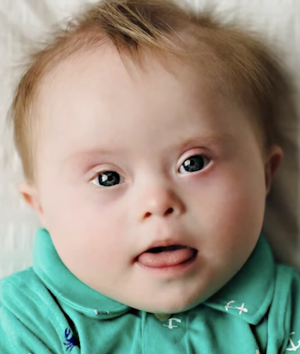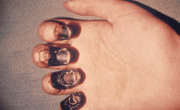Scientists take a bold step toward addressing Down syndrome at the genetic level
By
Veronica E.
- Replies 0
Disclaimer: The information provided in this article is for educational purposes only and is not intended as a substitute for professional medical advice, diagnosis, or treatment. Always consult your physician or other qualified healthcare providers with any questions you may have regarding a medical condition or before making any changes to your health regimen.
What if it were possible to correct the root cause of Down syndrome—not just manage the symptoms, but actually remove the extra genetic material responsible for the condition?
A new scientific development in Japan is raising exactly that possibility, sparking a mix of hope, curiosity, and deep ethical questions.
Researchers have used a groundbreaking gene-editing technique to eliminate the extra chromosome 21 from lab-grown human cells.
While it’s not yet a treatment for people living with Down syndrome, the experiment offers a glimpse into what might be possible in the future.
It’s a development worth watching closely—for families, doctors, and anyone interested in the future of genetic medicine.

Down syndrome, also known as trisomy 21, is a genetic condition caused by having three copies of chromosome 21 instead of the usual two.
This extra genetic material affects brain development and physical growth, often leading to intellectual disabilities and health complications.
In the US, about one in every 700 babies is born with Down syndrome, and an estimated 250,000 people are currently living with the condition.
Most current treatments focus on improving quality of life—supporting learning, treating heart conditions, and offering therapies to help with development.
But none address the genetic root itself.
Until now, that’s been out of reach.
Scientists at Mie University in Japan have taken a bold new approach using CRISPR-Cas9, a tool often described as “molecular scissors” for its ability to cut and modify DNA.
In their lab experiment, they used CRISPR to target and cut the extra copy of chromosome 21 in cells grown in a dish.
This action caused the cell to discard the extra chromosome entirely.
What makes this technique particularly impressive is that it was able to preserve the two original copies—one from each parent—while removing only the surplus chromosome.
That level of precision was nearly unimaginable just a decade ago.
To increase the success rate, the team temporarily disabled the cell’s DNA repair system, encouraging it to jettison the broken chromosome instead of trying to fix it.
After the edit, the modified cells began behaving more like typical cells, particularly in the areas of gene activity tied to brain development.
Although the lab results are promising, experts are urging caution.
Dr. Roger Reeves of Johns Hopkins University, a longtime Down syndrome researcher, called it a compelling “proof of concept.”
In other words, it shows that the science works in theory—but not yet in the real world.
To apply this to a living person, you would need to remove the extra chromosome from hundreds of millions of cells in the body, which is currently impossible.
Most cells would not survive the editing process, and delivering CRISPR safely to each one would be a major challenge.
At this stage, it’s a laboratory breakthrough—not a treatment or cure.
Even if this method never becomes a direct therapy, it represents a shift in how scientists think about genetic disorders.
Rather than treating symptoms, this research aims at the underlying cause—and that opens new doors for science.
With these “corrected” cells, researchers can study how genes on chromosome 21 affect development and health, potentially leading to new ways to help people with Down syndrome live longer and healthier lives.
However, with powerful science comes significant ethical responsibility.

Editing the human genome—especially in embryos—raises many questions.
Could we introduce new problems while solving old ones? Where do we draw the line between medical treatment and genetic enhancement?
Currently, many countries prohibit gene editing in human embryos, and the Japanese team behind this study has emphasized the ethical and technical barriers that must still be addressed.
Delivering CRISPR safely, preventing unintended effects, and confirming long-term safety will all be essential before any real-world application is considered.
The immediate future of this research is not in treatment but in scientific discovery.
With the ability to compare edited and unedited cells, scientists can investigate which genes contribute to learning difficulties, heart problems, or other symptoms of Down syndrome.
That knowledge could help create better treatments and therapies for people living with the condition today.
It’s also a chance for researchers, policymakers, and families to come together and discuss what kind of future we want when it comes to genetic medicine.
This discovery may not lead to a cure tomorrow, but it marks an important step forward in how we understand and approach Down syndrome.
As science continues to evolve, so does the potential to improve lives—not just through treatment, but through deeper knowledge and compassionate dialogue.
Read next: This woman thought she had a common cold—you won’t believe what doctors found inside her head!

What are your thoughts on this scientific milestone? Would you support this kind of genetic research, or do you have concerns about where it might lead? Let us know in the comments—we’d love to hear your perspective!
What if it were possible to correct the root cause of Down syndrome—not just manage the symptoms, but actually remove the extra genetic material responsible for the condition?
A new scientific development in Japan is raising exactly that possibility, sparking a mix of hope, curiosity, and deep ethical questions.
Researchers have used a groundbreaking gene-editing technique to eliminate the extra chromosome 21 from lab-grown human cells.
While it’s not yet a treatment for people living with Down syndrome, the experiment offers a glimpse into what might be possible in the future.
It’s a development worth watching closely—for families, doctors, and anyone interested in the future of genetic medicine.

New genetic tools are opening doors to better understand—and possibly reshape—how we treat Down syndrome. Image Source: YouTube / McGovern Institute.
What causes Down syndrome?
Down syndrome, also known as trisomy 21, is a genetic condition caused by having three copies of chromosome 21 instead of the usual two.
This extra genetic material affects brain development and physical growth, often leading to intellectual disabilities and health complications.
In the US, about one in every 700 babies is born with Down syndrome, and an estimated 250,000 people are currently living with the condition.
Most current treatments focus on improving quality of life—supporting learning, treating heart conditions, and offering therapies to help with development.
But none address the genetic root itself.
Until now, that’s been out of reach.
Also read: When AI goes too far: Sexualized content mimicking Down syndrome sparks outrage
A new kind of genetic breakthrough
Scientists at Mie University in Japan have taken a bold new approach using CRISPR-Cas9, a tool often described as “molecular scissors” for its ability to cut and modify DNA.
In their lab experiment, they used CRISPR to target and cut the extra copy of chromosome 21 in cells grown in a dish.
This action caused the cell to discard the extra chromosome entirely.
What makes this technique particularly impressive is that it was able to preserve the two original copies—one from each parent—while removing only the surplus chromosome.
That level of precision was nearly unimaginable just a decade ago.
To increase the success rate, the team temporarily disabled the cell’s DNA repair system, encouraging it to jettison the broken chromosome instead of trying to fix it.
After the edit, the modified cells began behaving more like typical cells, particularly in the areas of gene activity tied to brain development.
Also read: Heart attack deaths are down—but these conditions are now claiming more lives
Exciting progress—but still a long way from treatment
Although the lab results are promising, experts are urging caution.
Dr. Roger Reeves of Johns Hopkins University, a longtime Down syndrome researcher, called it a compelling “proof of concept.”
In other words, it shows that the science works in theory—but not yet in the real world.
To apply this to a living person, you would need to remove the extra chromosome from hundreds of millions of cells in the body, which is currently impossible.
Most cells would not survive the editing process, and delivering CRISPR safely to each one would be a major challenge.
At this stage, it’s a laboratory breakthrough—not a treatment or cure.
Also read: Numbness in your extremities could signal a serious health issue – find out if it’s Raynaud’s or worse!
Why this still matters
Even if this method never becomes a direct therapy, it represents a shift in how scientists think about genetic disorders.
Rather than treating symptoms, this research aims at the underlying cause—and that opens new doors for science.
With these “corrected” cells, researchers can study how genes on chromosome 21 affect development and health, potentially leading to new ways to help people with Down syndrome live longer and healthier lives.
However, with powerful science comes significant ethical responsibility.

A baby with Down syndrome—scientists are exploring future treatments that may one day improve outcomes, starting before birth. Image Source: YouTube / @medicaldialogues.
Editing the human genome—especially in embryos—raises many questions.
Could we introduce new problems while solving old ones? Where do we draw the line between medical treatment and genetic enhancement?
Currently, many countries prohibit gene editing in human embryos, and the Japanese team behind this study has emphasized the ethical and technical barriers that must still be addressed.
Delivering CRISPR safely, preventing unintended effects, and confirming long-term safety will all be essential before any real-world application is considered.
Also read: New clue could help detect one of the deadliest cancers sooner, doctors say
What happens next?
The immediate future of this research is not in treatment but in scientific discovery.
With the ability to compare edited and unedited cells, scientists can investigate which genes contribute to learning difficulties, heart problems, or other symptoms of Down syndrome.
That knowledge could help create better treatments and therapies for people living with the condition today.
It’s also a chance for researchers, policymakers, and families to come together and discuss what kind of future we want when it comes to genetic medicine.
This discovery may not lead to a cure tomorrow, but it marks an important step forward in how we understand and approach Down syndrome.
As science continues to evolve, so does the potential to improve lives—not just through treatment, but through deeper knowledge and compassionate dialogue.
Read next: This woman thought she had a common cold—you won’t believe what doctors found inside her head!
Key Takeaways
- Japanese scientists have used CRISPR-Cas9 to remove the extra chromosome 21 in lab-grown human cells with Down syndrome, offering new insight into potential treatments.
- This breakthrough is still in the early research stage and is not ready to be used in living humans, as editing every affected cell remains technically impossible.
- The research helps scientists understand the condition more deeply and may lead to improved therapies, even if it doesn’t become a direct cure.
- Gene editing brings ethical and safety challenges, especially when it involves embryos or large-scale changes to human DNA.
What are your thoughts on this scientific milestone? Would you support this kind of genetic research, or do you have concerns about where it might lead? Let us know in the comments—we’d love to hear your perspective!






